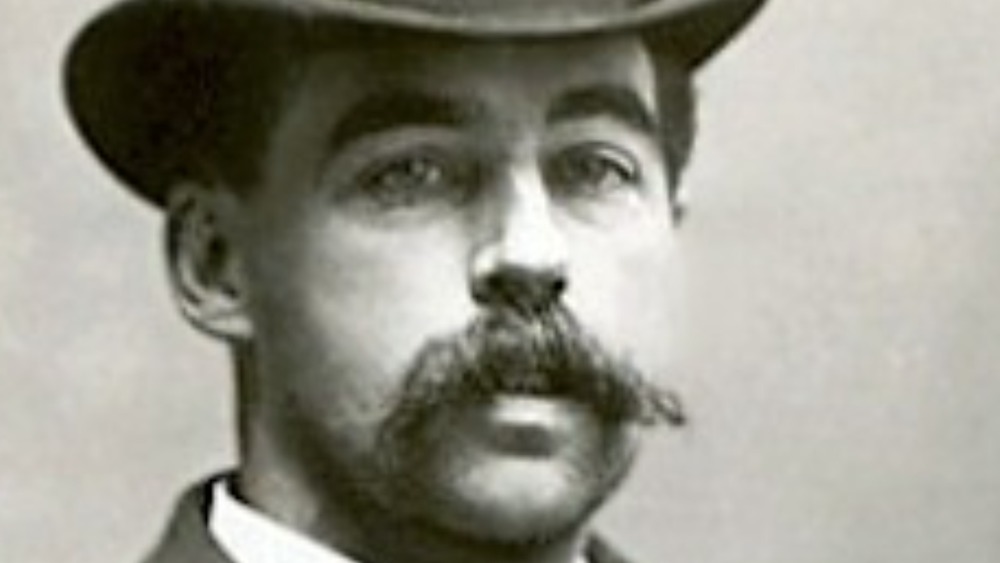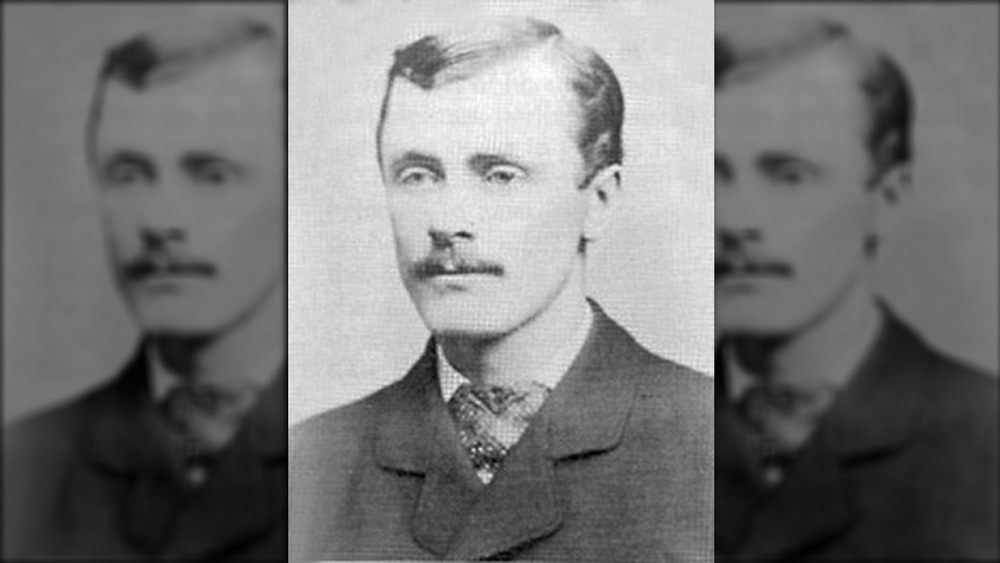Why H.H. Holmes Ended Up Killing His Business Partner
Herman Webster Mudgett, or as he is better known to history, H.H. Holmes, was a con artist, fraudster, and America's first serial killer. According to Biography, he was born in 1861, and his cruel bag of tricks included things like stealing cadavers from the University of Michigan, where he studied medicine, to use in insurance fraud scams (and possibly perform experiments on them, the details of which, we're fine not knowing). Later, he moved to Chicago, where he is believed to have killed the owner of a pharmacy and taken the business from her. During the 1893 World's Fair, he rented out rooms in his home to visitors, many of whom never checked out of what came to be known as his "Murder Castle." He tortured and killed the unfortunate people he duped and then made his victims, but it is unknown just how many he killed in the sham hotel.
After the World's Fair concluded, he left Chicago in search of other people to scam and murder. He and a business partner would come up with another insurance fraud scheme, but his associate soon discovered that he was in cahoots with the wrong kind of con man.
His business partner learned that there's no faking death with H.H. Holmes
Benjamin Pitezel (pictured above) thought he'd come up with a pretty sweet deal with his new buddy and business partner H.H. Holmes. The idea was for Pitezel to fake his own death, Holmes would collect the $10,000 insurance payment, and they'd split the loot and live happily ever after. But according to Mental Floss, Holmes had other plans. Rather than go through the whole rigmarole of faking Pitezel's death, he figured it'd be easier to live his best serial killer life and just kill the guy. In addition to making the "dead guy" part of the scam more authentic, it also allowed Holmes to nab a few more victims. Holmes told Pitezel's wife that her husband was still alive — he was just hiding out from the insurance company. Reasoning that a man who had helped her husband fake his death to commit insurance fraud was the right kind of person she wanted in her family, the wife allowed three of her children to go traveling with Holmes. She never saw them again.
Unable to contain himself, Holmes sealed his fate when he bragged about the scam to a cellmate while in jail for a different fraud. The guy ratted him out, ultimately leading investigators to Holmes, who was finally arrested in November 1894. Holmes gave varying and contradictory confessions, so the true count of his victims is unknown, but it was estimated to be anywhere from 20 to 200 people.

